PCOS (Polycystic Ovary Syndrome) and PCOD (Polycystic Ovary Disorder) affect millions of women today, causing irregular periods, weight gain, acne, hair growth, mood swings, and even fertility issues. Beyond the physical symptoms, the stress and emotional toll can be just as heavy.
Yoga is one of the simplest, safest, and most natural practices to help manage PCOS/PCOD and bring hormones back into balance. Unlike heavy workouts, yoga is gentle yet powerful. It reduces stress, boosts blood circulation, supports reproductive health, and calms the mind.
If you’re struggling with PCOS, yoga can become your daily companion in healing — not a quick fix, but a long-term support system.
What is PCOS/PCOD?
PCOD happens when the ovaries release immature eggs that form cysts, usually due to lifestyle or hormonal changes. PCOS, on the other hand, is a more serious hormonal condition where the ovaries produce excess male hormones (androgens), leading to irregular ovulation and metabolic issues.
Both conditions can cause irregular cycles, weight gain, acne, hair loss, mood changes, and difficulty conceiving. Stress and poor lifestyle choices often make symptoms worse.
While medical treatment is important, yoga and lifestyle practices play a major role in managing symptoms. With regular practice, yoga helps regulate cycles, reduce stress hormones, and restore balance to the body.
Benefits of Yoga for PCOS
Practicing yoga regularly can be a game-changer for women struggling with PCOS or PCOD. Yoga works on the body at a hormonal, physical, and emotional level, making it one of the most natural and effective management tools. It helps balance hormones by stimulating key endocrine glands like the thyroid, pituitary, and adrenal, which directly influence reproductive health. By calming the nervous system, yoga also lowers stress and reduces cortisol levels that often disrupt menstrual cycles. It’s gentle movements support metabolism, aid weight management, and are especially effective in reducing stubborn belly fat linked to PCOD.
Additionally, yoga improves blood circulation to the pelvic area, which supports fertility and overall reproductive health. Beyond the physical benefits, yoga uplifts mood, enhances focus, and boosts self-confidence — making it a holistic practice for both body and mind.
Key benefits of yoga for PCOS and PCOD include:
- Balances hormones – stimulates endocrine glands like the thyroid, pituitary, and adrenal.
- Reduces stress – calms the nervous system and lowers cortisol, which disrupts reproductive hormones.
- Aids weight management – supports metabolism and helps reduce belly fat.
- Improves fertility – enhances blood flow to the pelvic area, supporting reproductive health.
- Boosts mental wellbeing – improves mood, focus, and self-confidence.
Best Yoga Poses for PCOS
There are dozens of yoga asanas that can help women with PCOS and PCOD, but not all of them are beginner-friendly or easy to practice daily. To make it simple, I’ve shortlisted some of the best and easiest yoga poses for PCOD and PCOS that you can comfortably include in your routine at home.
These poses don’t require advanced flexibility or special equipment, yet they are highly effective in balancing hormones, improving blood circulation, and reducing stress — the three most important factors in managing PCOS and PCOD naturally.
1. Supta Baddha Konasana (Reclined Bound Angle Pose)
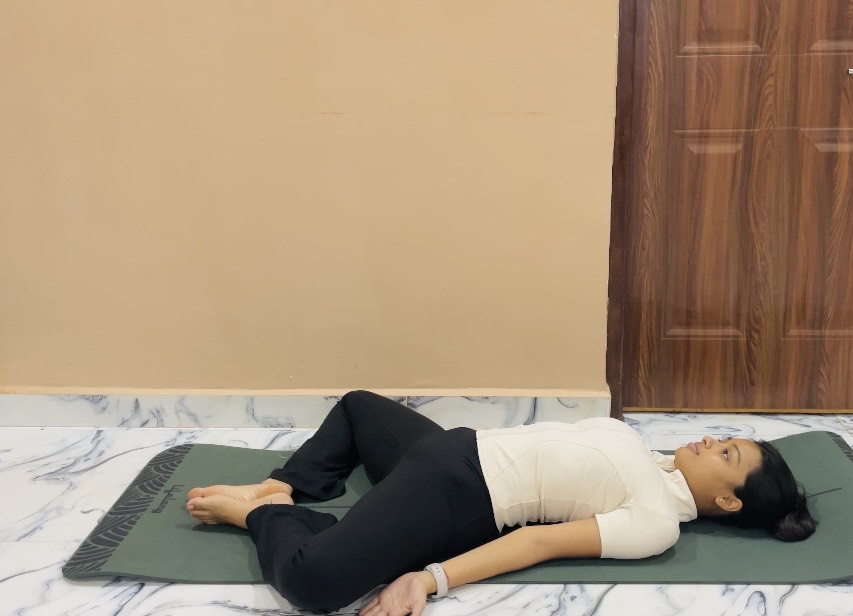
- How to do: Lie on your back, join soles of feet, let knees fall out. Support with cushions if needed.
- Benefits: Improves blood flow to ovaries, relaxes pelvic region, calms the mind.
- Practice: 3–5 minutes daily.
2. Bhujangasana (Cobra Pose)
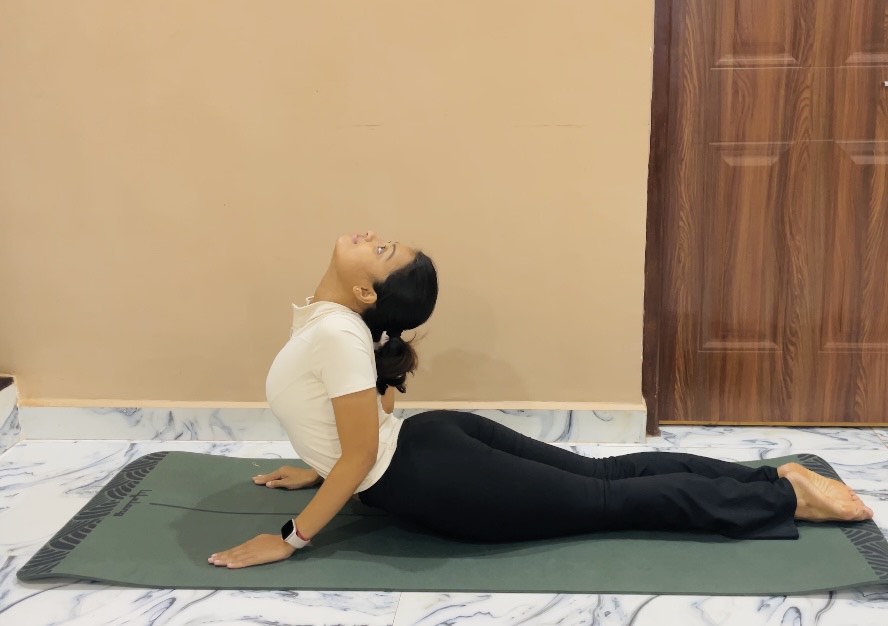
- How to do: Lie on your stomach, place palms beside chest, inhale and lift chest gently.
- Benefits: Stimulates abdominal organs, relieves stress, strengthens spine.
- Practice: Hold 20–30 seconds, repeat thrice.
3. Baddha Konasana (Butterfly Pose)

- How to do: Sit tall, join soles of feet, flap knees gently up and down.
- Benefits: Increases hip flexibility, improves circulation to ovaries.
- Practice: 2–3 minutes daily.
4. Setu Bandhasana (Half Bridge Pose)
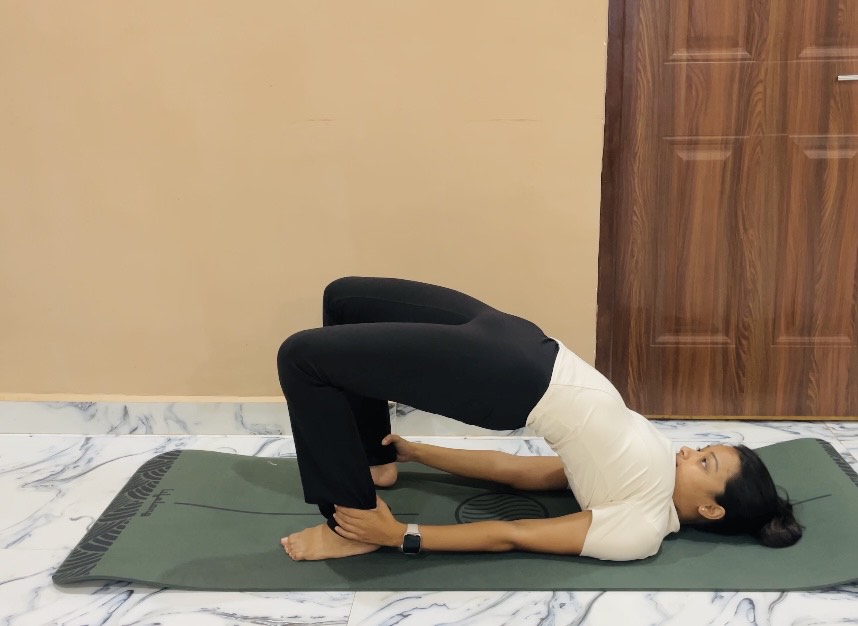
- How to do: Lie on back, bend knees, feet hip-width apart, inhale and lift hips.
- Benefits: Stimulates thyroid gland, tones abdomen, relieves back pain.
- Practice: Hold 30–45 seconds, repeat twice.
5. Balasana (Child’s Pose)
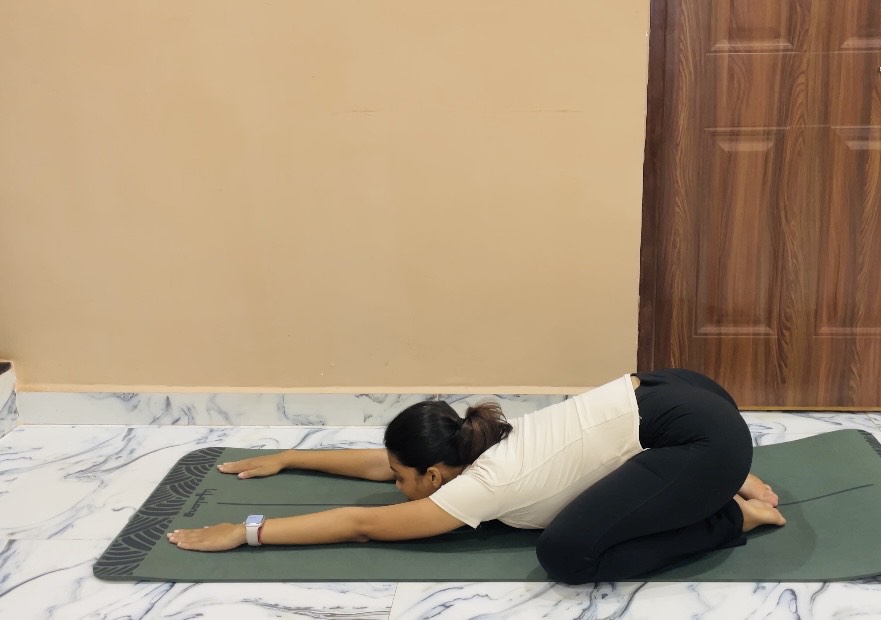
- How to do: Kneel, sit back on heels, fold forward, forehead on mat, arms stretched forward.
- Benefits: Calms the nervous system, reduces anxiety, eases lower back tension.
- Practice: 2–3 minutes daily.
Tips for Practicing Safely
While yoga is gentle and safe for most women, it’s important to practice mindfully to avoid injuries and maximize benefits. If you’re starting yoga for PCOD, keep these safety tips in mind:
- Warm up first – Always do a short warm-up before beginning yoga to prepare your body and avoid muscle strain.
- Avoid overstretching – Yoga for PCOD should feel soothing and comfortable. Never push your body into pain; progress gradually.
- Practice on an empty stomach – The best time to do yoga is early morning or evening, at least 2–3 hours after a meal.
- Use props if needed – Cushions, yoga blocks, or straps can make poses easier and more comfortable, especially for beginners.
- Consult your doctor if necessary – If you have severe PCOS symptoms, chronic back pain, or are pregnant, always get medical advice before starting.
- Focus on consistency – The real benefits of yoga for PCOD come with regular practice. Even 15–20 minutes daily is more effective than occasional long sessions.
Conclusion
Living with PCOS or PCOD can often feel overwhelming, but the good news is that with the right lifestyle practices, it can be managed effectively. Along with proper medical guidance, Yoga for PCOD is one of the most natural and holistic ways to bring your body back into balance. Yoga is not just physical exercise — it is a healing journey that helps regulate hormones, reduces stress, and restores harmony in both body and mind.
The key lies in patience and consistency. When practiced regularly, yoga for PCos and PCOD becomes a daily dose of self-care that supports long-term health. Over time, you’ll begin to notice positive changes in your menstrual cycles, weight management, mood stability, energy levels, and overall wellbeing. With dedication, yoga can empower you to take control of your health and embrace a more balanced, confident life.

About the Author
Akshata Halankar
This article has been written in collaboration with YogAnanta, by Akshata Halarnkar — a certified yoga trainer specializing in women’s hormonal health. At YogAnanta, she guides women through safe and effective yoga practices for PCOD, PCOS, and overall wellbeing

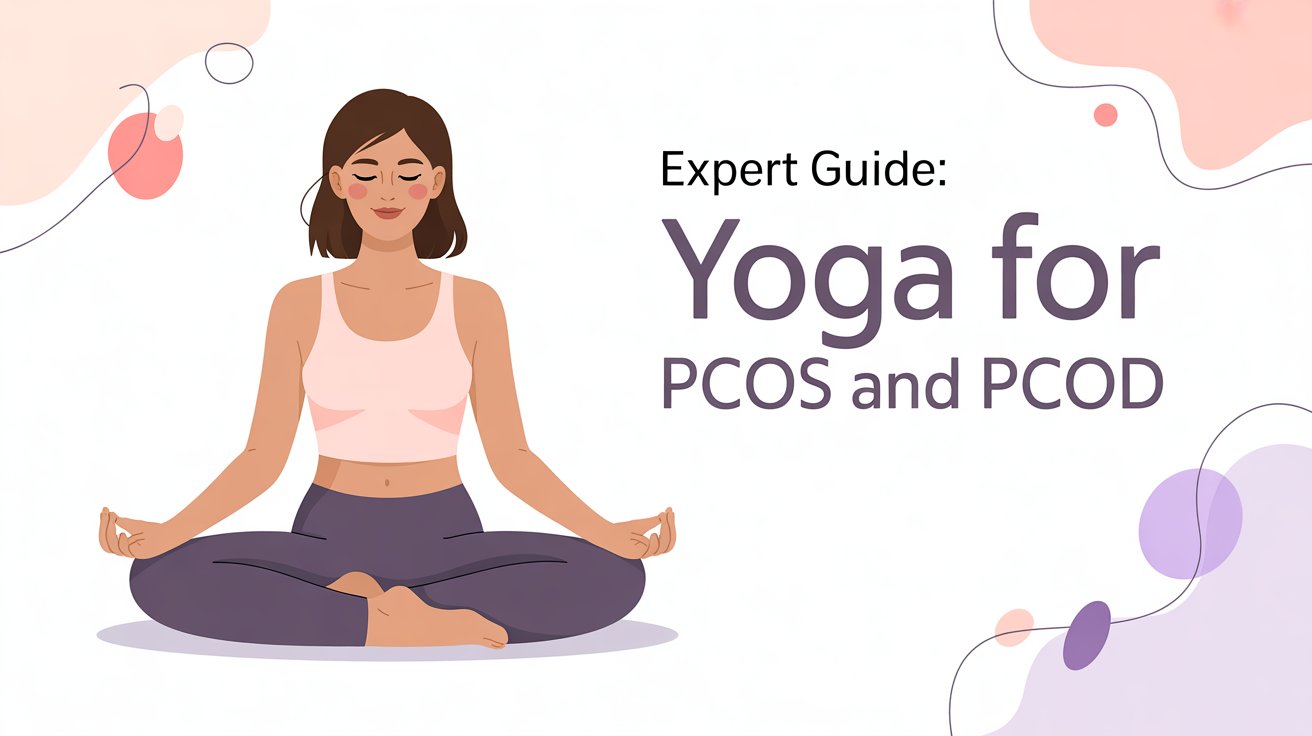

2 Comments